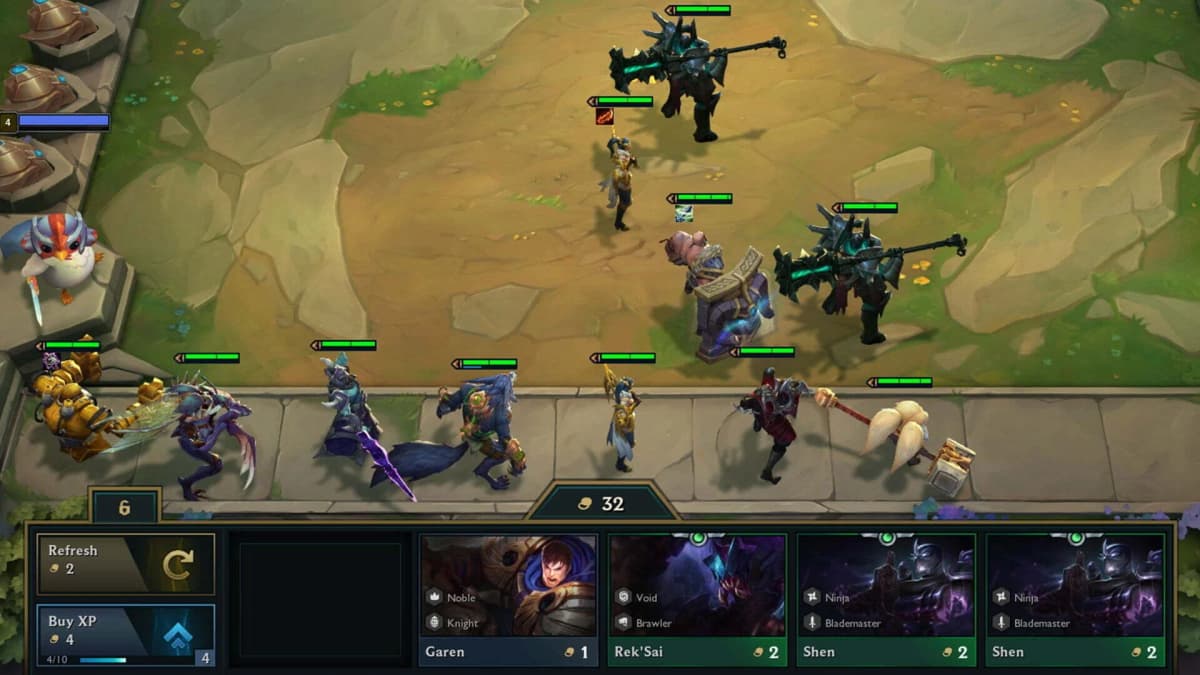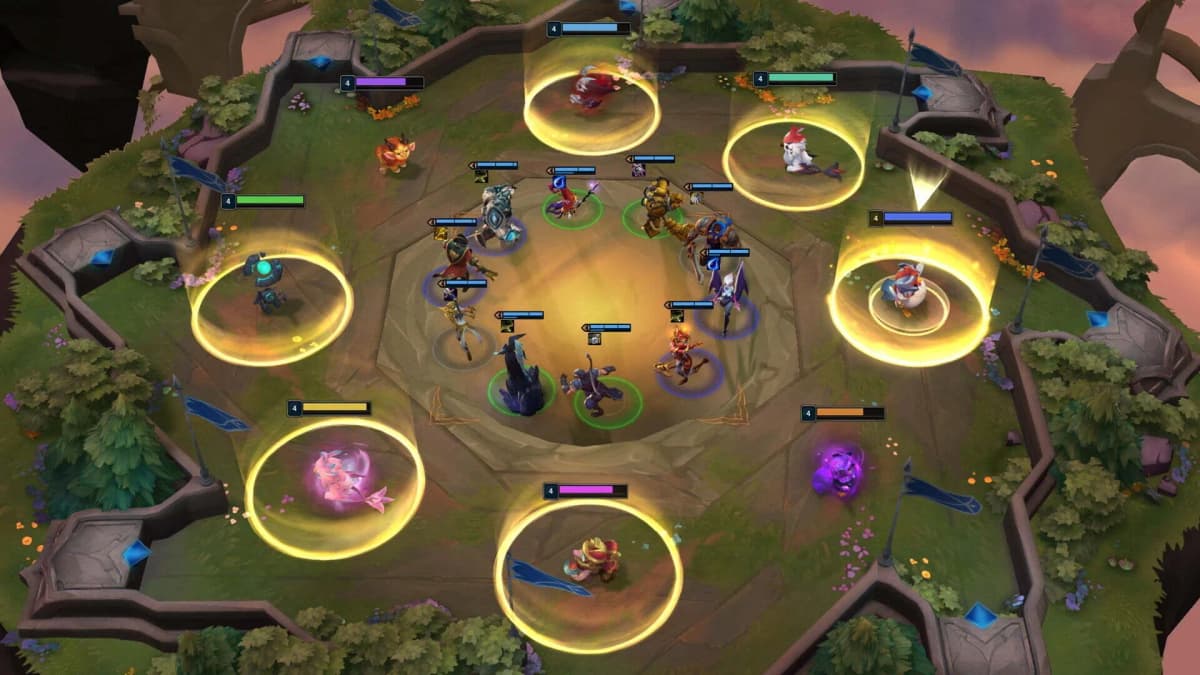
Game intel
Teamfight Tactics: K.O. Coliseum
Teamfight Tactics is a round-based strategy game that pits you against seven opponents in a free-for-all race to build a powerful team that fights on your beha…
As someone who’s bounced between obsession and burnout with Teamfight Tactics, I was table-flippingly done with Set 14. “Cyber City” just missed the mark—uninspired traits, a mana system ripe for cheese, and vertical prismatics that turned every game into a slot-machine high-roll fiesta. So when Set 15: K.O. Coliseum hit the PBE, I went in skeptical. Yet against all odds, it’s already won me over. Here’s why I think K.O. Coliseum isn’t just a return to form, but one of the best TFT sets in ages.
If you played much Cyber City, you already know the pain. Dump a Rageblade on Zeri or Vayne, and watch every lobby degenerate into the same autopilot comps. Riot eventually reworked Rageblade, but that just shifted the problem—now each lobby turned into a frantic sprint for Dynamo abusers or surprise Urgot spikes. Vertical trait prismatics didn’t help either: early Spatulas could decide the outcome before the midgame even began. It stopped feeling like a thinking player’s game and more like a glitzy slot machine.
What drew me to TFT in the first place was chess-like decision-making, not praying to RNGesus. Set 14 was a sweaty, stale grind that rewarded autopilot builds over creativity. By the end, I was logging off permanently—until the promise of changes in K.O. Coliseum lured me back.
One of the biggest complaints was flat mana stacking—stack a bunch of items, spam abilities, rinse and repeat. Riot’s answer in Set 15 was to scrap flat mana entirely and introduce mana regeneration rates for each champion. Now you have to plan around consistent ability cycling. Want to corner-control the midgame? You need champions with hefty regen or a support that can buff your casters’ mana gains. No more “who can ult first wins” carry rushes. Instead, positioning, trait synergy, and regen timing all matter.
I tested this on PBE by running an early Sorcerer comp with Veigar and Brand. With proper regen supports, I found myself timing ultimates in sync with my opponent’s cooldown windows. It turned a once-boring auto-spammer strategy into a tug-of-war for ability control, which is exactly the kind of depth I craved.
Prismatic augments used to be a coin flip: get the lucky Anima Squad pick at level 5, and the game practically wins itself. Now, each Prismatic trait requires hitting milestones or fulfilling conditions to unlock. Want a nuke-heavy Prismatic? You might need 10 spellcasts or a perfect streak. That extra requirement makes you pivot and adapt instead of autopiloting.

One of my favorite new augments is Wandering Trainer, which buffs a random trait each round. You can’t predict which one you’ll get, but you can build flexible synergies around your strongest early trait pool. I experimented with a Volibear “Edgelord” board—mixing Brawler, Bruiser, and Sorcerer—rather than forcing the usual cookie-cutter comp. It felt like a revival of the strategic freedom we saw in Dragonlands and Magic N’ Mayhem.
K.O. Coliseum nails its theme from the first match. Watching Braum perform a frog splash—literal pro wrestling style—and send enemies flying like Beyblades had me grinning ear to ear. Mundo’s chair-yeeting augment might be underpowered now, but it’s pure meme magic. That level of playful flair has been missing.
The Monster Trainer trait lets you pick from three “totally not Pokémon” units, each with its own mini-evolution feel. Mentor vibes channel Avatar: The Last Airbender, complete with combo-casting circles on the ground. And then there’s Aura Farming, which tempts you with stage-5 cheese if you can secure a ramp rush. It’s a balance of whimsy and power that harkens back to TFT’s most memorable sets.
My biggest fear was that Power Ups would be another RNG mess. Instead, they’re tactical forks in the road. Behind each Power Up icon is a choice: extra gold, targeted CC resistance, bonus damage for specific champions, and more. Sure, there are a few head-scratching duds, and Solar Breath feels borderline OP, but the system rewards thoughtful adaptation.

Imagine you’re struggling against heavy healing comps. A quick Power Up that applies anti-heal to all enemies can swing a losing skirmish your way. Or maybe you need extra gold to tech into a three-star 4-cost—there’s a Power Up for that, too. It’s not a guaranteed game-winner, but it’s a strategic toolbox that elevates late-game decision-making.
Set 15 also spices up the early rounds. Introduced Encounters like 3-Cost Start (you begin with a random 3-cost champion) or Upgraded Start (a 2-star 1-cost on your bench) make the first few rounds unpredictable. Instead of the same 1-cost brawlers, you could suddenly have a leveled-up starter unit to build around.
On PBE, I got a 3-cost Lucian round one and pivoted into a Marksmaster comp I never would’ve tried otherwise. It threw opponents off balance and rewarded me for improvising rather than direction-scrolling through my core set. Those small early-game wrinkles add texture and reduce the feeling of autopilot board-building.
Unlike past launches where balance tweaks trickled out defensively, Riot has been proactive this time. The PBE has seen multiple rounds of tuning on Power Ups, slight mana tweaks for key casters, and early trait rebalance. The community in the Official TFT Discord is buzzing—most of the hot takes are positive, with threads praising how Set 15 feels polished from the jump.

Even pro players have chimed in. One challenger streamer noted that match-to-match variation feels higher than any set in the past year, forcing continuous adaptation. That’s a far cry from the stale “queue, slam Rageblade, watch the W” routine of Set 14.
No set is perfect. There are still balance wonkiness—Mundo can feel underwhelming in pro play, and some Power Ups overlap too much. A handful of Prismatic traits need fine-tuning on their unlocking thresholds. Yet these feel like minor quibbles in what is otherwise a robust, creativity-driven experience.
If I had one ask, it’s that Riot continue to monitor the spread of less popular traits and ensure they remain viable. But given how swiftly they’ve patched so far, I’m optimistic Set 15 will stay fresh rather than stagnate.
Set 15: K.O. Coliseum is a masterclass in iteration—smarter mana mechanics, Prismatic traits that reward strategy, vibrant theme and memes, tactical Power Ups, and spiced-up early game encounters. It’s proof that when Riot listens, TFT can be both endlessly deep and wildly fun. Just do me a favor and don’t contest my Gangplank, okay?
Get access to exclusive strategies, hidden tips, and pro-level insights that we don't share publicly.
Ultimate Gaming Strategy Guide + Weekly Pro Tips